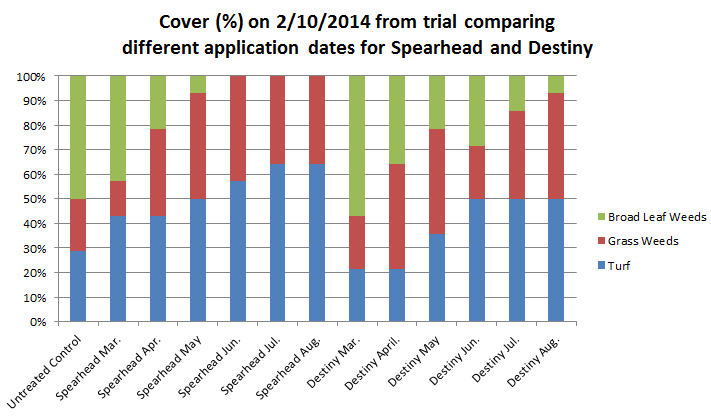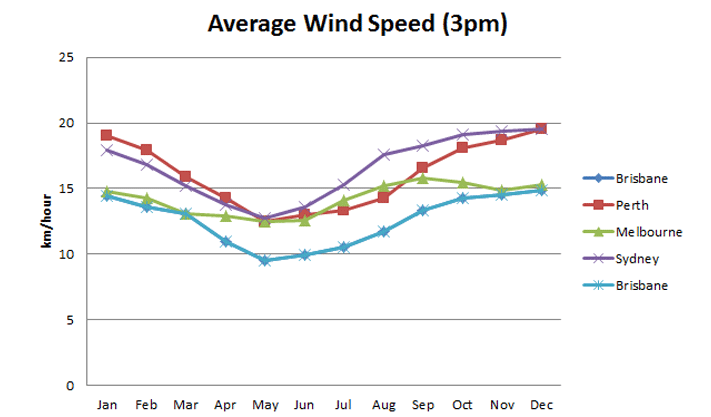Broadleaf Herbicide Timing Trial
The typical lifecycle of many turf broadleaf weeds starts with germination of weeds in the autumn. The weeds then develop principally vegetative growth over the winter months before flowering and setting seed in spring. Annual weeds then die; while perennial weeds go on to continue their lifecycle the following year.
Traditionally broadleaf herbicide applications are made in late winter or early spring when the weeds are maturing and starting to flower.
Trial
A trial was conducted to examine the effectiveness of various application timings on broadleaf weed control.
The trial was conducted at the University of Sydney turf plots at the Cobbity campus in western Sydney.
Herbicides were applied in March, April, May, June, July and August. The two common broadleaf herbicides Spearhead (at 5L/ha) and Destiny (at 100g/ha) were used. The Destiny was applied with a surfactant as per the label recommendations. The trial plots were then assessed in October for weed control.
The weeds present included bindie, clover, oxalis, plantain, capeweed, cudweed, chickweed and fleabane.
Results
Spearhead applications made in March, April and May had 43, 21 and 7% broadleaf weed cover respectively when assessed in October. Spearhead applications made in June, July and August had no broadleaf weeds present.
Destiny
Destiny applications failed to give complete weed control from any application. Annual weeds like bindie and chickweed were well controlled at each application, but perennial weeds like plantain were not successfully controlled. The lowest broadleaf weed cover was 7% from the August application and the highest 57% from the March application.
Conclusion
In this climate in south-western Sydney spraying winter weeds in early winter (May-June) provides as good weed control as leaving the spraying until later in winter (August). Annual weeds like bindie are well controlled by both Spearhead and Destiny. If perennial weeds are present then Spearhead is the suggested herbicide.
There are some advantages with this early spraying;
- Weeds are quite small and easy to control – The flush of broadleaf weed germination occurs in autumn. Spraying early enables more reliable weed control to occur.
- Turf Cover – Warm season turf swards generally have good cover at the end of summer. Spraying the small broadleaf weeds stops them from getting large and competing with the turf.
- Aesthetics – Spraying early takes away the eye-sore of actively growing weeds over the winter months. It also reduces bee populations on busy sportsfields in spring when the weeds are flowering.
- Weather Conditions - generally weather conditions (it terms of wind) are more conducive to spraying in May-June than in August-September. The graph on the following page shows average monthly wind speeds around Australia.
- Access to spraying contractors – spring is the busy time for spraying contractors. Spraying earlier in the season may help with fitting into their spray schedules.
 |
 |
Back to Tips and Expert Advice
